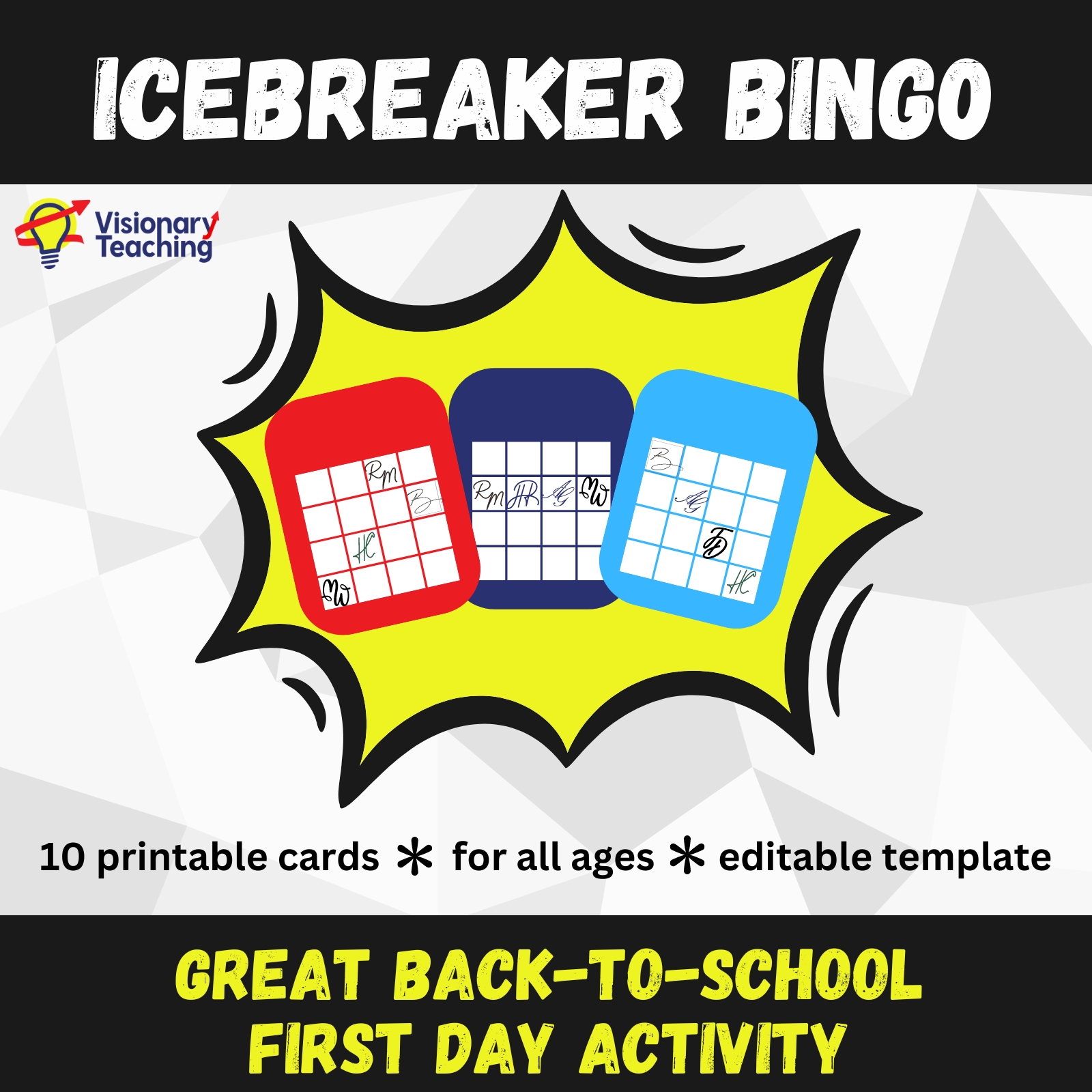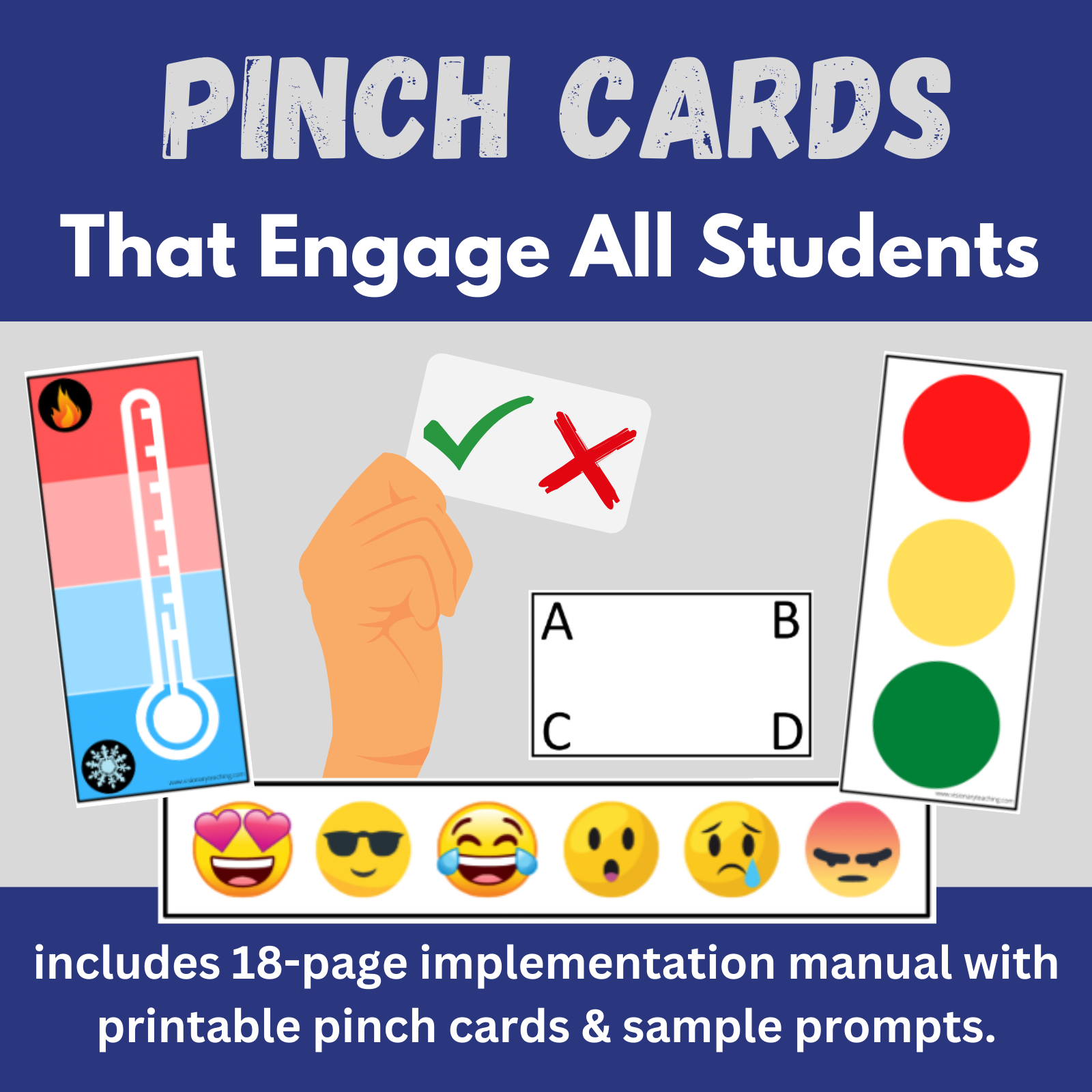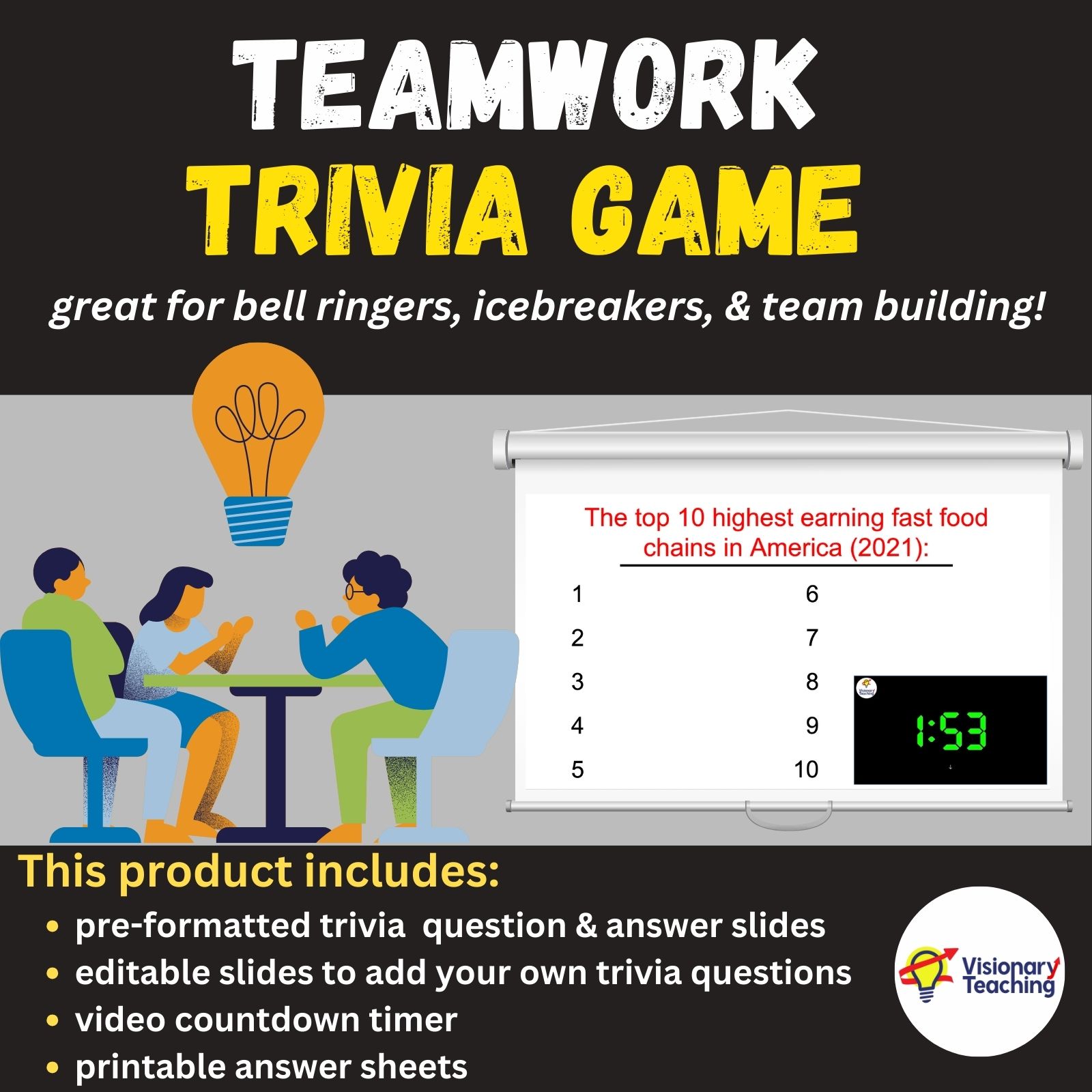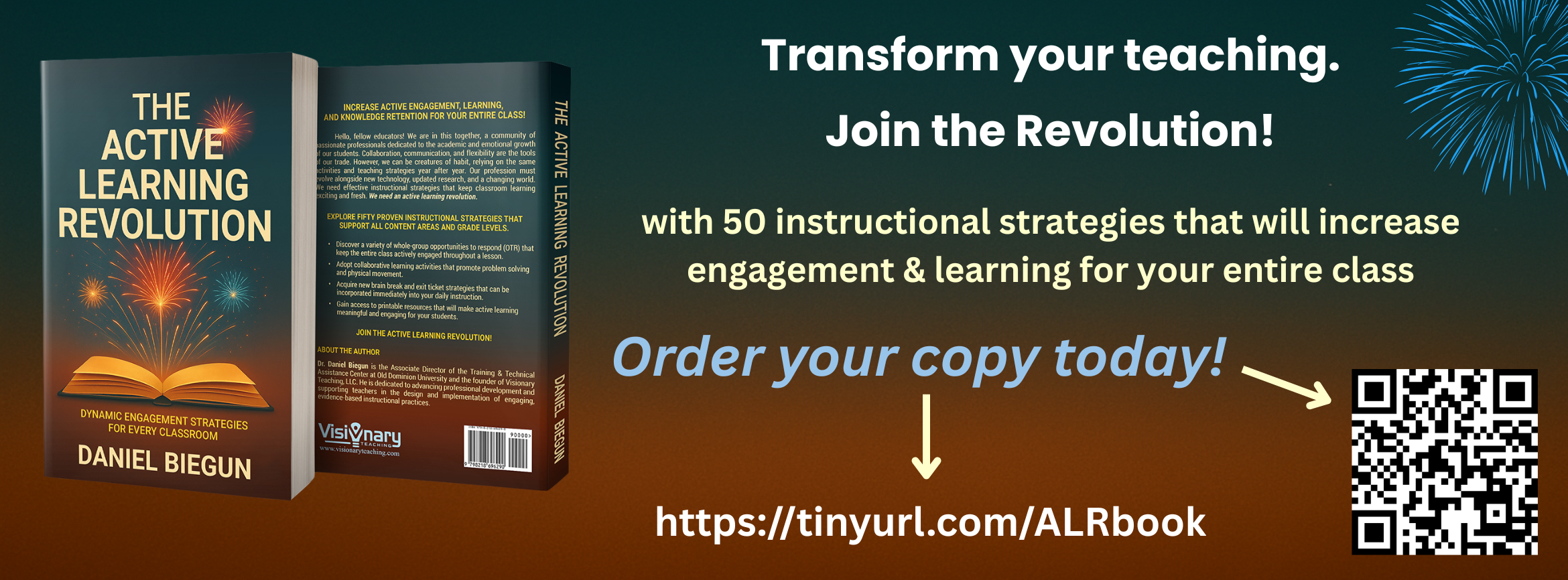
Teachers tend to know a lot. We can often find ourselves cramming too much content into short amounts of class time. Research tells us that we should periodically pause during our lessons and allow students time to process and reflect. This pause procedure strategy is important for all educators, whether teaching in K-12, lecturing for a college, or training adults.
When teachers or trainers pause for 2-3 minutes and allow learners to reflect, there are increases in both short-term and long-term memory (Prince, 2004). Intentional pauses during instruction can lead to improved recall and higher test scores.
Learners need time to process the information that we give them. They need opportunities to connect new content to personal experiences and previous learnings. So, how do we accomplish this? Here are 5 great ways to allow time for your students to reflect on and process new information.
Pinch Card Check Formative Assessment
We have explored a number of pinch cards in previous posts- true/false cards, multiple choice cards, and even Emoji cards. I would like to offer up 2 new pinch cards that students can use while pausing and reflecting.
- The Traffic Check card allows learners to think about the pacing of a lesson and communicate their feelings back to the teacher in a quick and easy way. You might ask, “How do you feel about our pace?”
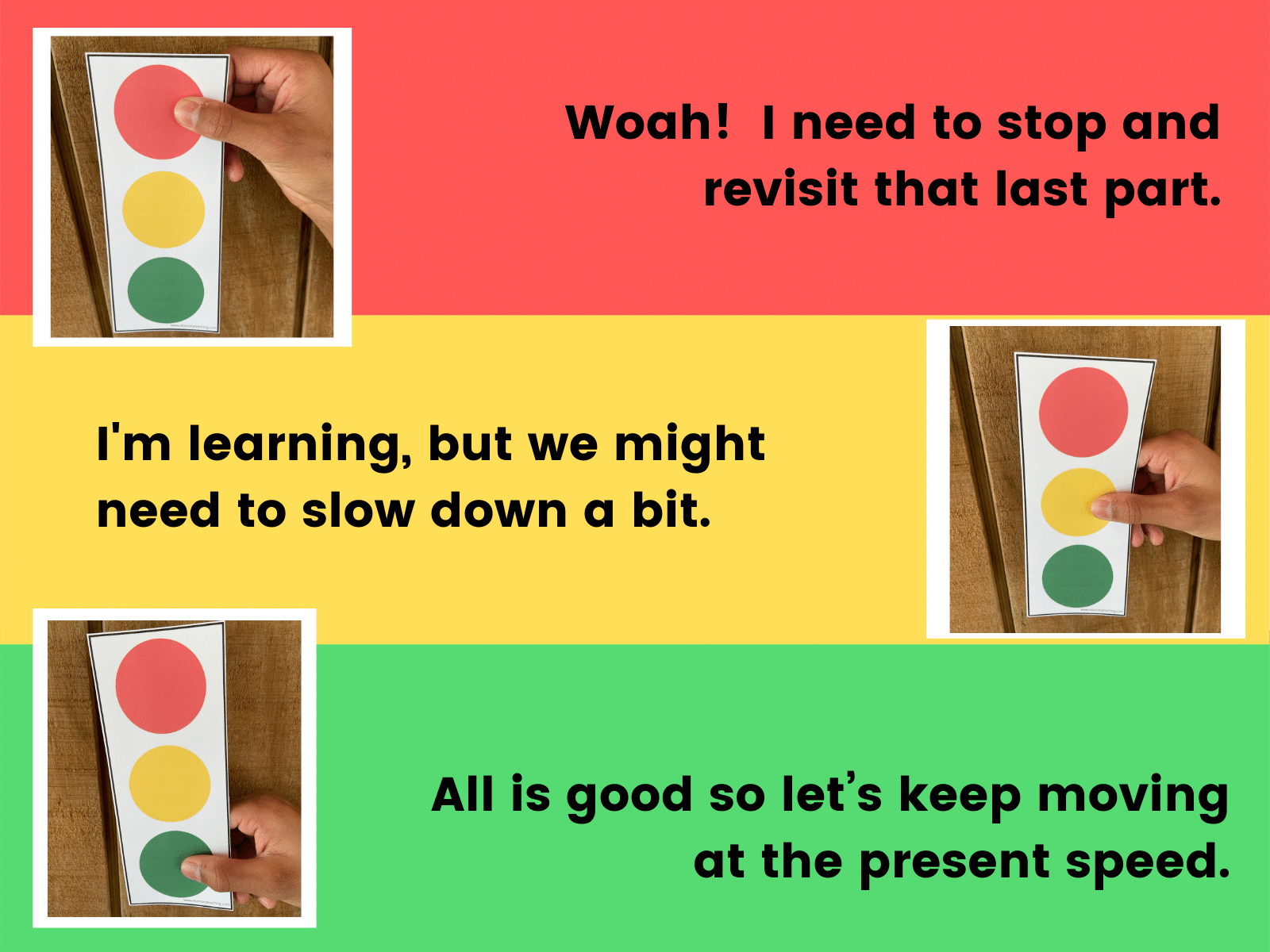
2. The Temperature Check card can be used to help students reflect on feelings or make predictions. The card allows for responses on a continuum of cold, cool, warm, and hot. A few examples of prompts that you might use with this pinch card:
- Rate your understanding of today’s lesson.
- How prepared do you feel for tomorrow’s quiz?
- What is your level of excitement for next week’s field trip?
Other Whole Group Opportunities to Respond
The pinch cards that we just considered are great examples of whole group opportunities to respond. There are so many other great options like gestures, white boards, choral responses, and annotation tools (Zoom).
It is important to ask a question and then give plenty of time for learners to process and think of an answer. Depending on the prompt and your students, this could be anywhere from 30 seconds to 3 minutes. During the pause, learners are able to consider deeper connections to the content and come up with more robust responses. For these whole group responses, I like to give a verbal cue that signals when it is time for everyone to respond- “3, 2, 1, respond.”
Review of Notes
Most students take notes during lessons and lectures. If you provide meaningful time for students to reflect on their notes, there is a better chance that thoughts will be organized, connections will be made, and information will be cemented in short-term and long-term memory.
One of my favorite strategies is to prompt my learners to make annotations in their notes. This works equally well with children in a class or adult learners at a professional development event. I might encourage students to underline three new things that they learned, circle two top takeaways, or highlight something that they want to know more about. Another great option is to provide small dot stickers and ask students to place them next to essential information in their notes.

Reflection Journal
I once participated in a year-long leadership academy that met each month for 2 intense days of face-to-face learning. Before lunch, and again just before dismissal, our amazing facilitator would play music and invite us all to write down our thoughts in a reflection journal. This simple technique really helped me reflect on what I learned. I was able to connect smaller pieces of information and form big picture takeaways. I still revisit my reflection journal from that academy. Is this a strategy that would appeal to your learners?
Exit Tickets
In a previous blog post, I shared 3 excellent exit ticket options that you should try. The key is to offer the exit ticket with plenty of time remaining in your class period or training session (preferably 5+ minutes) so that your learners can process their task and reflect on their learnings from the day. If you allow an appropriate amount of time for reflection, you are likely to get more meaningful responses.
The idea of devoting some of your instructional time to pause and allow students to process/reflect is based in research. However, it is not complicated or difficult. I challenge you to apply one of the five strategies described above to your existing instruction. Don’t be in a rush. Less can be more.
Happy teaching!
Prince, M. (2004). Does Active Learning Work A Review of the Research. Journal of Engineering Education, 93, 223-231.


